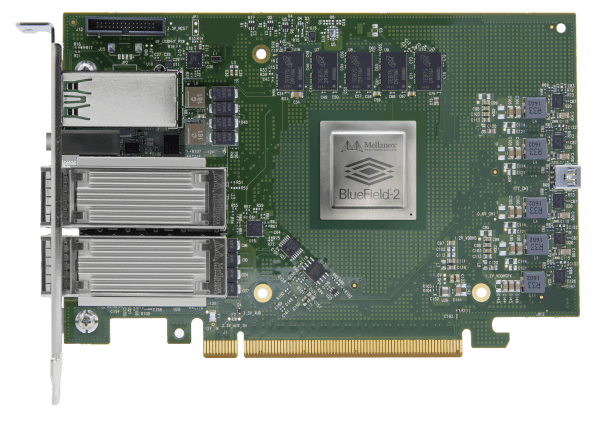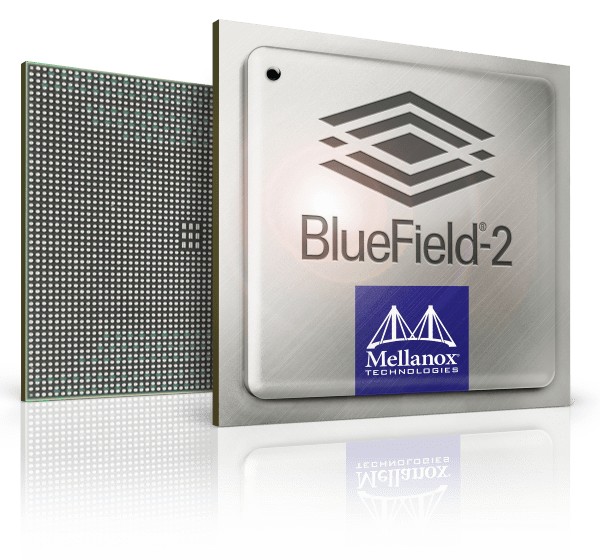Nvidia plans to acquire ARM. In this case, apart from GPUs and CPUs, a new chip called DPU will take its place. The company explains what it is and defines the roadmap for the coming years. The CPU and GPU are elements that make up our computers for decades, and although the role of the GPU has evolved beyond graphics to perform generic operations capable of making the most of its parallel computing capabilities, new emerging types in the IT sector: DPUs.
DPU, Quesako?
With the acquisition of ARM, the new Data Processing Units (DPU) chips, resulting from the acquisition of Mellanox, will also come into play. According to Nvidia CEO Jen-Hsun Huang, DPUs will represent one of the 3 main pillars of IT in the future. The CPU is for general computing, the GPU is for accelerated computing, and the DPU transfers the data to the data center and processes the information.
The DPU is defined by Nvidia as an , software-programmable, multi-core processor All of these capabilities are essential to delivering isolated, bare-metal, native cloud computing that will define the next generation of cloud computing. Basically, it is a specialized processor that can support network workloads and storage security.
The DPU can be used as a standalone integrated processor , but it is often integrated into a SmartNIC, which is an essential network interface controller for next-generation servers. In Nvidia's case, the company has developed a DPU called BlueField-2. This is currently in the testing phase and will be ready for delivery to partners in 2021.

The famous BlueField-2
BlueField-2 is based on a custom SoC. It has 8 ARM Cortex-A72 cores and 2 VLIW acceleration engines. It features a ConnectX-6 DX network card for high-speed network connectivity. Nvidia will release 2 cards equipped with DPU, BlueField-2 and BlueField-2. BlueField-2 is a traditional smartNIC with a DPU and 2 network ports. For Bluefield-2X, in addition to the DPU, we will note the presence of a GPU based on the Ampere architecture (probably GA102 but it is not certain). This is to accelerate what Nvidia calls “networked computing.” Looking ahead, Nvidia already has a clear roadmap, with the BlueField-3 and BlueField-4 families already in development: BlueField-3 will be an improved version of BlueField-2, while with BlueField-4, the company plans to build a graphics card with a single high-performance DPU, capable of providing the work of the combined DPUs and GPUs. It targets performance with artificial intelligence calculations equal to 400 TOPS.
As already done in the field of GPUs with CUDA, even in the case of DPUs, the American company is working on the software part by proposing the so-called “Data Center Infrastructure-on-a-Chip” (DOCA) architecture. ), i.e. a programming model for DPUs that can make life easier for developers.





